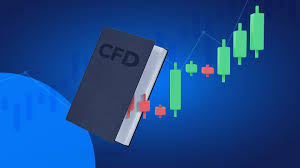What is a CFD?
CFD stands for Contract for Difference. A CFD is a financial contract between a buyer and a seller that pays the difference in the value of an asset between the time the contract opens and when it closes.
CFDs mirror the price movements of real financial assets like currencies, stocks, or commodities — but you don’t actually own the asset.
In simple terms, you’re betting on whether the price will go up or down.
How Do CFDs Work?
If the price of the asset moves in your favor, you make a profit. If it moves against you, you make a loss. For example:
- If the price of gold increases by 5%, your CFD also gains 5%.
- If the price falls by 5%, your CFD loses 5%.
CFDs are used to trade forex, shares, indices, commodities, and even cryptocurrencies.
What is a Forex CFD?
A forex CFD lets you speculate on the value of one currency compared to another — for example, the EUR/USD or GBP/JPY.
When you trade forex CFDs:
- You’re not actually buying or selling the currencies.
- You’re agreeing to pay (or receive) the difference between the price when you open the trade and when you close it.
This is done through a CFD provider or broker, who issues the contract.
Going Long vs. Going Short
When trading CFDs, you can either:
- Go Long (Buy): You expect the price to go up.
- Go Short (Sell): You expect the price to go down.
Your profit or loss is calculated based on the difference between the opening and closing price of the CFD, multiplied by the trade size.
CFD Trading Example
Let’s say you sell a CFD on GBP/JPY, expecting it to fall. If the price does fall:
- You profit the difference between the entry and exit price.
- If the price rises instead, you make a loss.
No actual currencies are exchanged. The settlement is done in cash, and the only thing that moves is the price difference.
CFDs Are Over-the-Counter (OTC) Products
CFDs are not traded on a central exchange. They are “over-the-counter” (OTC), meaning you deal directly with your broker, not through a public marketplace.
Leverage in CFD Trading
CFDs are leveraged products, which means:
- You can control a large position with a small amount of money (called “margin”).
- Leverage allows for bigger profits — but also bigger losses.
For example, with a leverage ratio of 50:1, you can control $10,000 with just $200. Some brokers offer up to 500:1 leverage in forex CFDs.
Understanding Margin Requirements
There are two types of margin in CFD trading:
- Initial Margin: The deposit needed to open a position.
- Maintenance Margin: Additional funds needed to keep the position open if the trade moves against you.
If your account balance drops too low, your broker may issue a margin call, requiring you to add funds. If you fail to do so, they may close your position automatically, locking in any losses.
Why Leverage is Risky
Because you’re trading with borrowed money:
- Even a small market movement can lead to big losses.
- If the market moves 0.5% against you on a $10,000 trade, and your deposit was only $100, you could lose 50% of your funds instantly.
- In volatile markets, price gaps can occur, potentially wiping out your account or even leaving you in negative balance.
Key Takeaways
- A CFD is a contract between you and a broker to trade on price movements.
- With forex CFDs, you trade on the price difference of currency pairs without owning them.
- You can profit whether prices rise or fall.
- CFDs are leveraged, allowing you to trade large positions with a small deposit.
- Leverage increases both profit potential and risk.
- CFDs are settled in cash — not with physical currencies or assets.
⚠️ Important Note
CFDs are banned in the United States for retail traders. Instead, U.S. traders use a similar product called rolling spot FX contracts.
Join Our Political Forum official 2025 WhatsApp Channel To Stay Updated On time https://whatsapp.com/channel/0029VaWT5gSGufImU8R0DO30


